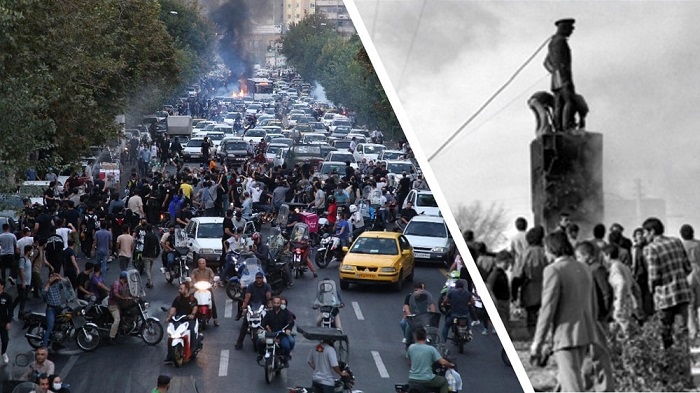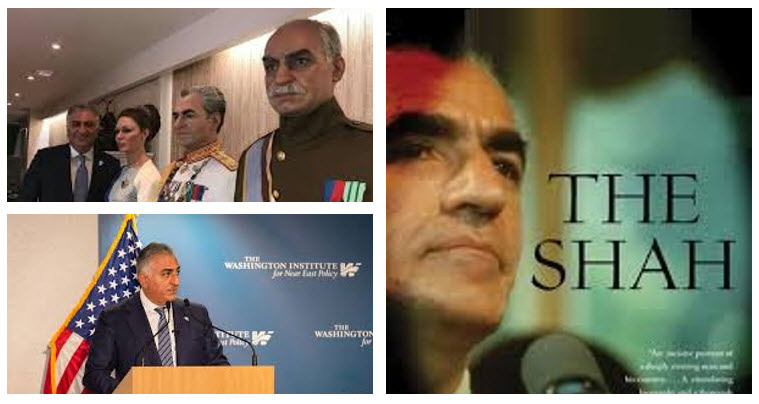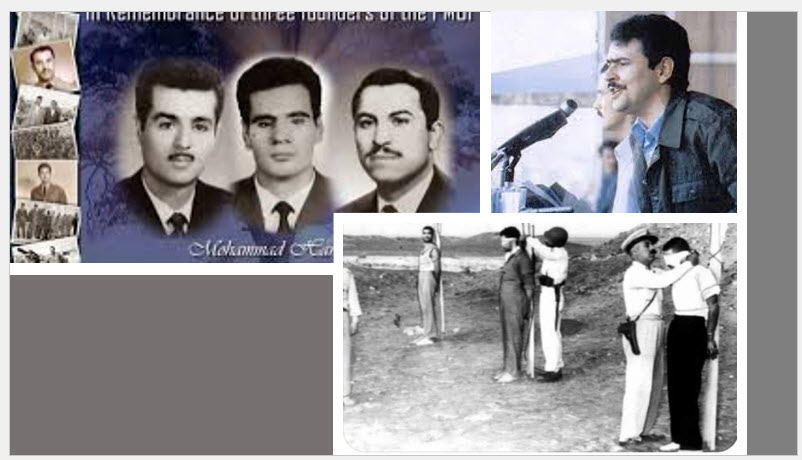
The 1979 revolution was a response to the decades-long rule of Shah Mohammad Reza Pahlavi and his brutal regime, but the hopes for democracy and freedom were quickly dashed when Ayatollah Ruhollah Khomeini hijacked the revolution and began a reign of terror.
Shah Mohammad Reza ensured the economic interests of foreign powers, mainly Britain at the time, which controlled Iran’s vast oil and gas resources. The foreign occupation fueled Iranian nationalism, leading to strong protests and a push for the nationalization of the country’s resources.

The removal of Prime Minister Mohammad Mosaddegh in a 1952 coup-d’état, supported by religious fanatics and later Ayatollah Khomeini, marked the beginning of the Shah’s “White Revolution.” The supposed reforms only served to benefit the ruling elites, with the Pahlavi family having the lion’s share of the wealth.
The increase in oil revenue in the 1970s did not improve the lives of average Iranians and led to high inflation and financial calamities. The country’s wealth rapidly declined in 1975 when oil prices dropped, leading to even more misery for average Iranians.
The Shah quashed any form of dissent and banned political activities, turning Iran into a one-party state. This led to the formation of opposition groups, including the People’s Mojahedin of Iran (PMOI/MEK) and the Organization of Iranian People’s Fedai Guerrillas (OIPFG).
The growing wave of dissent and youth joining the ranks of these organizations led to the formation of the notorious SAVAK secret police in 1958 with the help of the US. Today, 44 years after the anti-monarchical revolution, Iranians are once again taking to the streets to reject dictatorship in any form.

The hopes for a truly democratic and free Iran are still alive, and the MEK resistance honors the memory of leaders like Dr. Mohammad Mosaddegh who fought for the rights and freedoms of the Iranian people. Despite the hardships and obstacles, the struggle for freedom and democracy continues for the people of Iran

MEK Iran (follow us on Twitter and Facebook), Maryam Rajavi’s on her site, Twitter & Facebook, NCRI (Twitter & Facebook), and People’s Mojahedin Organization of Iran – MEK IRAN – YouTub







